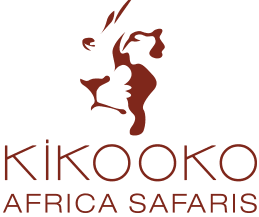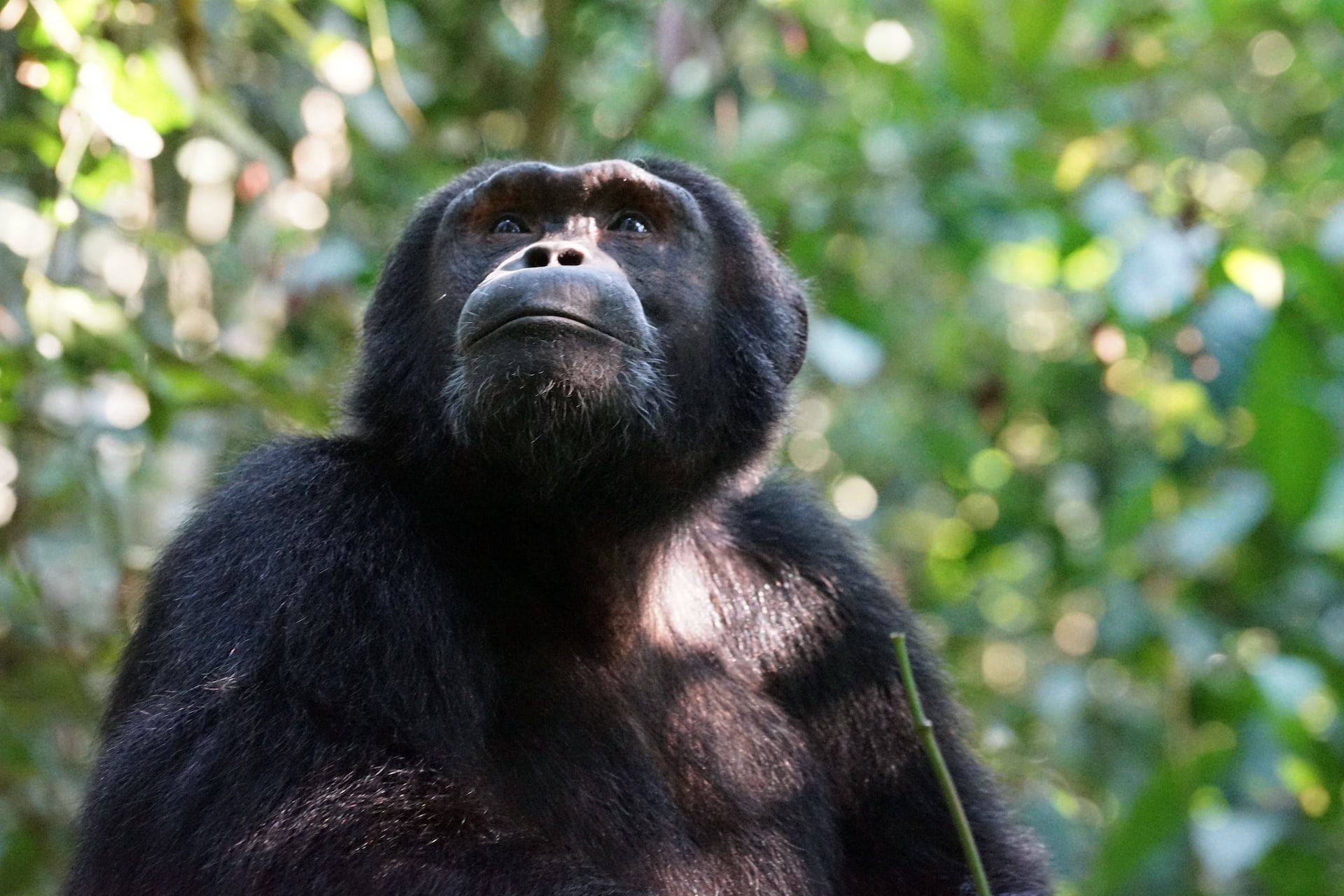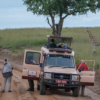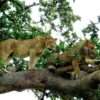Everything To Know About Chimpanzee Tracking Uganda 2023
Are you planning a trip to Uganda in 2023 and want to experience the thrill of chimpanzee tracking?
Look no further! Today we’re sharing everything you need to know about chimpanzee tracking in Uganda.
From the best locations to see these amazing creatures, to the equipment and clothing you’ll need to bring, to the rules and regulations for interacting with them, we’ll give you all the information you need to have an unforgettable chimpanzee tracking experience in Uganda.
So, whether you’re a seasoned wildlife enthusiast or a first-time visitor to Uganda, read on to learn everything you need to know about chimpanzee tracking in Uganda in 2023.
The Best Time Of Year To Go Chimpanzee Tracking Uganda
The best time of year to go chimp trekking in Uganda is during the country’s two dry seasons, which occur from December to February and from June to September. During these months, the weather is generally sunny and dry, and the forest trails are easier to navigate. Additionally, during the dry season, food sources for chimpanzees are more concentrated, making them easier to locate.
That being said, chimp trekking can still be done during Uganda’s rainy seasons, which occur from March to May and from October to November. While the trails may be muddier and more difficult to navigate during this time, there are still opportunities to see chimpanzees. The forest is also lush and green during the rainy season, providing a unique and beautiful backdrop for your chimp trekking adventure.
Overall, the best time of year to go chimp trekking in Uganda will depend on your personal preferences and travel plans. If you prefer drier weather and easier trail conditions, the dry season may be the best option for you. However, if you don’t mind a bit of rain and want to see the forest in full bloom, the rainy season can also be a great time to go chimp trekking in Uganda.
Chimpanzee Tracking Permit Cost In Uganda
In Kibale National Park, peak season chimpanzee permits cost $150 USD per person. Low season chimpanzee permits cost $100 USD per person.
In Kyambura Gorge, the chimpanzee tracking permit costs $50 USD for both high and low seasons.
For Budongo Forest in Murchison Falls National Park, the chimpanzee tracking permit costs $90 USD for both high and low seasons.
Differences Between Gorilla Tracking And Chimpanzee Tracking
- Habitat – Gorillas live in dense forest habitats, while chimpanzees can be found in a variety of habitats, including forests, woodlands, and savannas.
- Group size – Gorillas live in relatively small groups, typically consisting of one dominant silverback male, several females, and their offspring. In contrast, chimpanzees live in larger groups that can number up to 100 individuals.
- Trekking difficulty – Gorilla tracking is generally considered more difficult than chimpanzee tracking due to the dense vegetation and steep terrain in gorilla habitats.
- Time spent with the animals – They both involve one-hour windows of spending time with the animals, though chimpanzees are more mobile, so the time can feel like it passes more quickly as you’re on the move.
- Cost – Gorilla trekking permits are more expensive than chimpanzee tracking permits, largely due to the limited number of permits available for gorilla trekking.
- Conservation status – Gorillas are considered to be more critically endangered due to their smaller populations and more restricted habitats.
Where Can I See Chimpanzees In Uganda
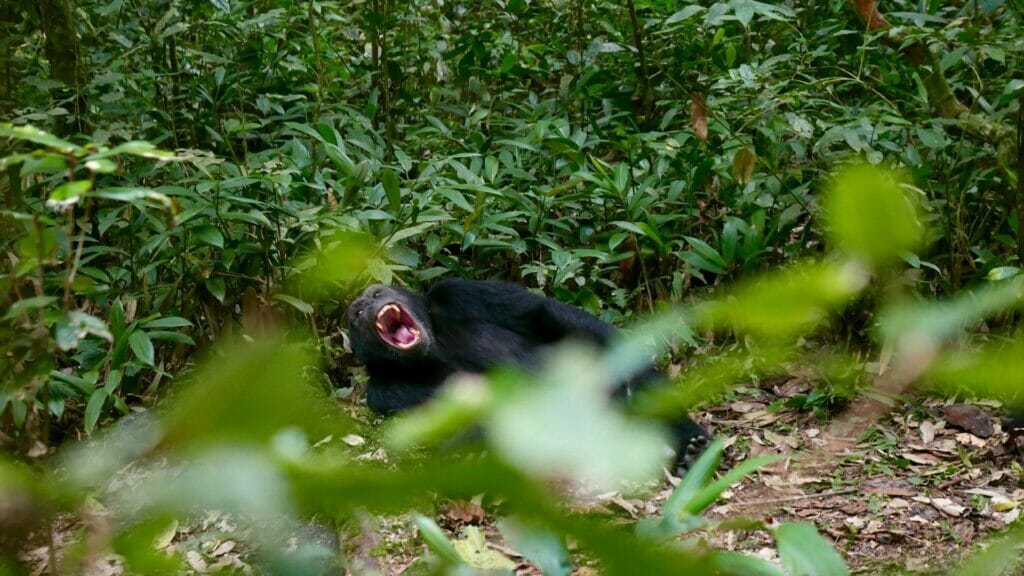
Uganda is one of the best places to see chimpanzees in their natural habitat. Here are some of the best places to see chimpanzees in Uganda, including Kibale Forest, Kyambura Gorge, and Budongo Forest:
See Chimpanzees In Kibale Forest National Park
Kibale Forest National Park is one of the most popular places to see chimpanzees in Uganda. The park is located in western Uganda, about 35 kilometers south of Fort Portal town. Kibale is home to about 1,500 chimpanzees, making it one of the best places in Africa to see these primates. In addition to chimpanzees, Kibale is home to a wide variety of other wildlife, including red colobus monkeys, black-and-white colobus monkeys, and L’Hoest’s monkeys, as well as over 350 bird species.
See Chimpanzees In Kyambura Gorge
Kyambura Gorge is located in Queen Elizabeth National Park in southwestern Uganda. The gorge is home to a small population of chimpanzees, as well as other primates such as baboons and red-tailed monkeys. The gorge is also home to a variety of other wildlife, including elephants, buffalos, and various antelope species.
See Chimpanzees In Budongo Forest
Budongo Forest is located in northwestern Uganda, near the border with the Democratic Republic of Congo. The forest is home to about 800 chimpanzees, making it one of the largest populations of chimpanzees in Uganda. In addition to chimpanzees, Budongo is also home to other primates such as black-and-white colobus monkeys, red-tailed monkeys, and blue monkeys. Budongo is also a great place for birdwatching, with over 360 bird species recorded in the forest.
How Safe Is Chimpanzee Tracking
Chimpanzee tracking can be safe, but like any wildlife activity, there are risks involved. Here are some things to consider to help ensure a safe chimpanzee tracking experience:
- Follow the rules – Always follow the rules and regulations set by the park authorities and your guide. This may include staying a safe distance from the chimpanzees, not feeding them or touching them, and avoiding sudden movements or loud noises.
- Use a reputable tour operator – It’s important to use a reputable tour operator that adheres to safety guidelines and has experienced guides. They can help you minimize risks and ensure a safe experience. Always be sure they are certified with the Uganda Wildlife Authority and the Association of Uganda Tour Operators.
- Wear appropriate clothing – Chimpanzee tracking can involve hiking through dense forest terrain, so it’s important to wear appropriate clothing such as long pants, long-sleeved shirts, and comfortable hiking shoes.
- Stay healthy – Chimpanzees are susceptible to human diseases, so if you’re feeling unwell, it’s important to avoid tracking them to prevent the risk of transmitting any illness to the chimpanzees or other wildlife.
- Be aware of your surroundings – While chimpanzees are generally not aggressive towards humans, it’s important to be aware of your surroundings and follow your guide’s instructions if a chimpanzee approaches too closely or displays aggressive behavior.
Chimpanzee Tracking In East Africa
Whether you’re looking for other chimpanzee tracking options in East Africa, or you want to hit the trifecta of tracking chimps in Uganda, Rwanda, and Tanzania, here is a bit more information on the other countries you can find them.
Chimpanzee Tracking In Tanzania
In Tanzania, chimpanzee tracking can be done in several locations, including Mahale Mountains National Park and Gombe Stream National Park. Mahale Mountains National Park is located on the shores of Lake Tanganyika in western Tanzania and is home to one of the largest populations of chimpanzees in the world, with over 1,000 individuals.
Chimpanzee tracking in Mahale typically involves hiking through the forest with an experienced guide to locate the chimpanzees, followed by spending up to one hour in their company. Gombe Stream National Park is located in western Tanzania and is home to several communities of chimpanzees that have been studied extensively by researchers, including the famous primatologist Jane Goodall.
Chimpanzee tracking in Gombe Stream typically involves hiking through the forest to locate the chimpanzees, followed by spending several hours observing their behavior and interactions.
Chimpanzee Tracking In Rwanda
In Rwanda, chimpanzee tracking takes place in Nyungwe Forest National Park.
The park is located in southwestern Rwanda and is home to over 500 chimpanzees. Chimpanzee tracking in Nyungwe Forest typically involves hiking through the forest with an experienced guide to locate the chimpanzees.
Once the chimpanzees are located, visitors can spend up to one hour in their company. In addition to chimpanzees, Nyungwe Forest is also home to a variety of other primates, including colobus monkeys, blue monkeys, and vervet monkeys.
10 Must-Have Items For Your Chimpanzee Tracking Packing List
- Small day pack (backpack) – This is necessary to carry your personal items such as snacks, water, camera, insect repellant, and other essentials.
- Snacks – Bring energy-boosting snacks like granola bars, nuts, and dried fruits to keep your energy levels up during the tracking.
- Water – Carry enough water to keep yourself hydrated during the tracking.
- Camera – You will want to capture memories of your chimpanzee tracking experience, but be sure to use a camera with the ability to turn off the flash to avoid disturbing the chimpanzees.
- Durable, lightweight water-resistant hiking boots with grippy soles – You’ll want good traction in case of muddy slopes, so choose sturdy, waterproof, and comfortable boots.
- Water-repelling but ventilated jacket – It’s important to have a water-repellent jacket in case of rain, but also make sure it’s ventilated to keep you cool during the hike.
- Layered clothing – The weather can be unpredictable, so it’s essential to pack layered clothing to stay warm or cool depending on the temperature.
- Long sleeves and long pants – These are recommended to protect against prickly foliage and insects you may encounter during the tracking.
- Insect repellent – Mosquitoes and other biting insects are common in forested areas, so be sure to bring a strong insect repellent.
- Gloves – Gloves can provide added protection from insects and thorny vegetation, and also help to keep your hands warm on cooler days.
Chimpanzee Trekking vs Chimpanzee Habituation
The main difference between chimpanzee tracking and chimpanzee habituation in Uganda is the level of interaction with the chimpanzees.
Chimpanzee tracking involves going out with experienced guides to search for a habituated chimpanzee group in their natural habitat. Once the chimpanzees are located, visitors can spend up to one hour observing and learning about their behavior and interactions. The chimpanzees are already used to human presence and visitors are required to maintain a minimum distance from the animals.
On the other hand, chimpanzee habituation involves spending more time with a chimpanzee group that is still getting used to human presence. Habituation can take up to 2-3 years, during which researchers and guides spend time with the chimpanzees to get them accustomed to human presence. Visitors who participate in chimpanzee habituation get to spend the whole day with the chimpanzees, observing their behavior, and even helping researchers collect data.
During chimpanzee habituation, visitors are able to observe more intimate moments of chimpanzee life such as nesting, feeding, and playing. The chimpanzee habituation permit allows for a four-hour visit and a more immersive experience.
Chimpanzee Trekking vs Chimpanzee Tracking
Chimpanzee trekking and chimpanzee tracking are both activities that involve observing chimpanzees in their natural habitat. For many tourists, the terms are used interchangeably.
However, there is a slight difference between the two.
Chimpanzee trekking involves hiking through the forest to find and observe chimpanzees in their natural habitat. This activity typically requires a certain level of physical fitness and can involve hiking for several hours in search of the chimpanzees. Once the chimpanzees are located, visitors can observe them from a safe distance while a guide provides information about their behavior and habitat.
Chimpanzee tracking involves following a group of chimpanzees as they move through the forest. This activity is more focused on observing the chimpanzees’ behavior and interactions with each other, rather than on hiking or physical activity. Visitors may still need to hike to reach the chimpanzees, but the focus is more on following their movements and behavior once they are located.
Book Your Uganda Chimpanzee Tracking Adventure With Kikooko Africa Safaris
Ready to book your Uganda chimpanzee tracking tour? As Uganda safari tour specialists, it would be our honor to help you plan your next trip to East Africa. We encourage you to get in touch with our team when you’re ready to chat!
